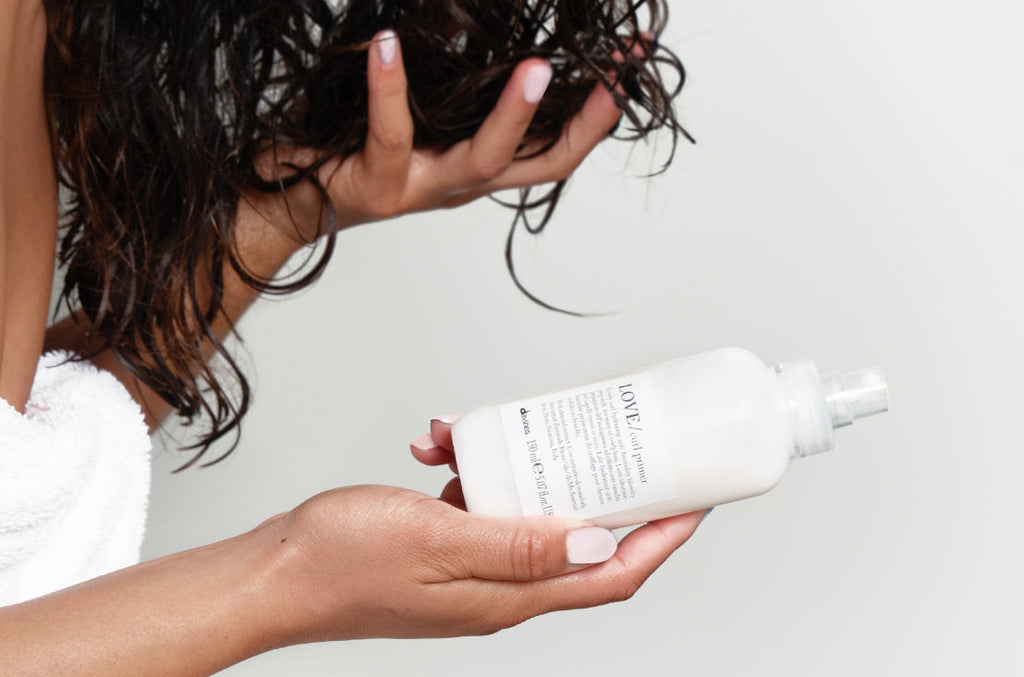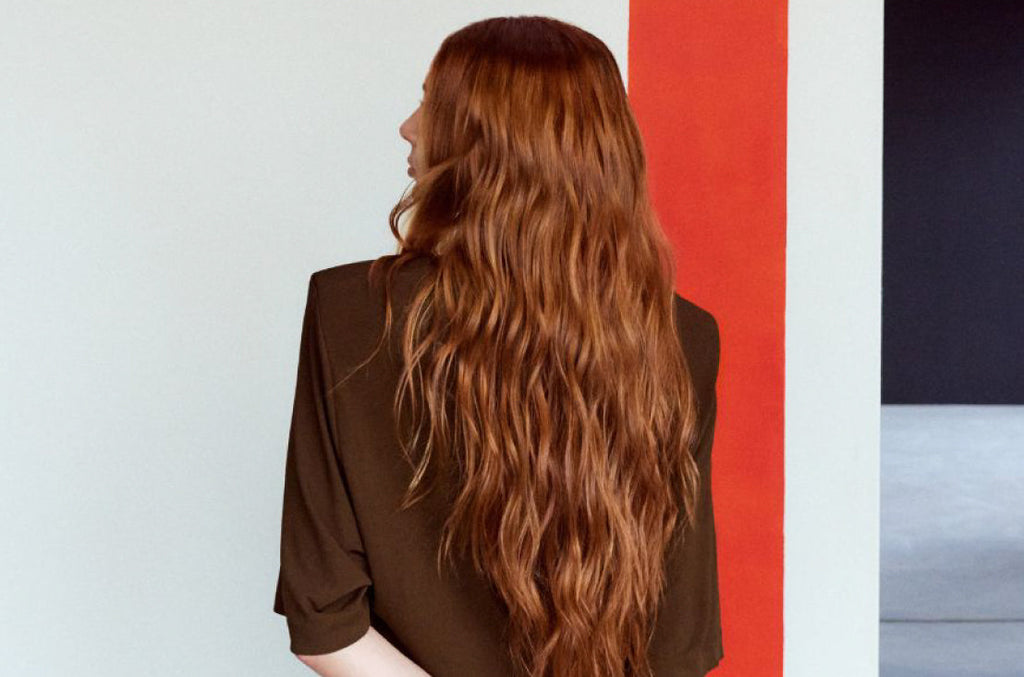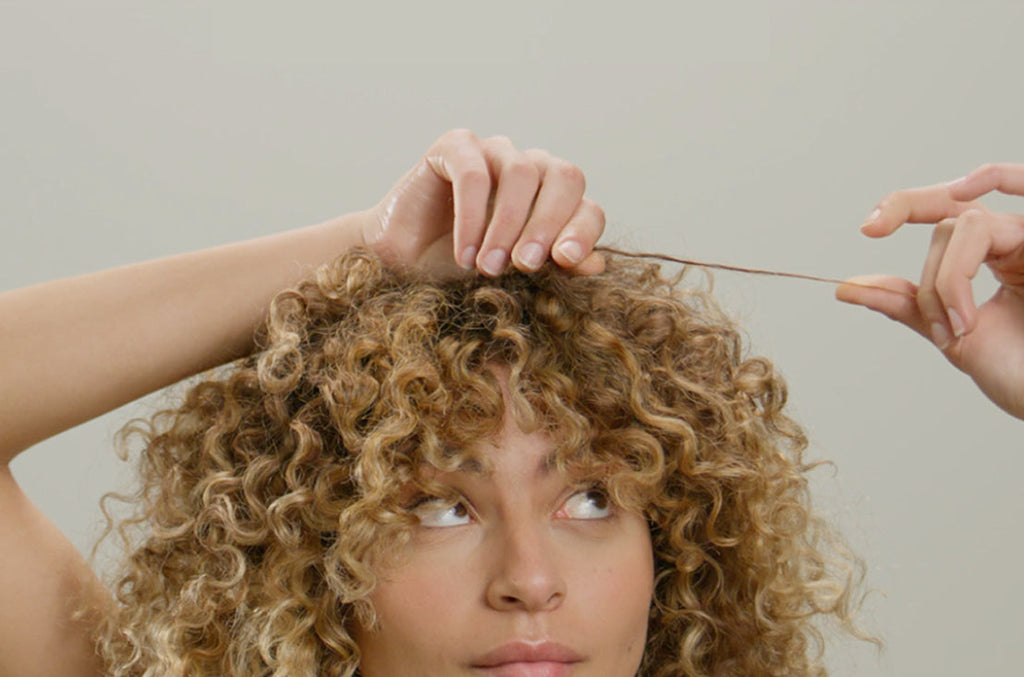Pay with Klarna
Free Carbon Neutral Shipping On Orders $75+, Plus Free Samples!
Pay with Klarna
Free Carbon Neutral Shipping On Orders $75+, Plus Free Samples!
‘Tis the season to start switching up a lot of things in your life — swapping in a colder weather wardrobe, updating your skincare to be more moisturizing and protective, and maybe even sprucing up your home decor. But there’s another routine that needs adjusting once the temperatures start dropping: your hair care regimen.
Cold weather generally has the same effect on your hair as it does your skin. The colder air draws out moisture, often leading to increased dryness and irritation, which then usually ends in breakage and damage. But the negative effects don’t stop once you’re cuddled up in front of the fireplace: the constant fluctuation of moving between the cold outdoors and dry indoor heat can lead to further dryness and damage.
Instead of showing up at your hair salon in the spring looking to undo an entire season’s worth of damage, we’re discussing the easiest ways to make sure your hair is healthy, healed, and protected all winter long.
photo by @sruthijayadevan
Consider these winter hair care tips as essential as your coat and gloves, and turn to them for guidance once the air starts getting chillier.
The most important part of a winter hair care routine = moisture. When choosing the right healthy hair products for your hair type, look for ones that can bring a welcome boost of moisture and hydration to your strands. A light hydrating shampoo is a smart way to keep your hair moisturized from the scalp, especially when paired with a nourishing conditioner. If you’re noticing flaking or redness from other products, try a shampoo for sensitive scalps instead. And if your hair is excessively dry or damaged, you can try damaged hair products as a way to target your treatment. Healthy hair has the perfect amount of moisture and hydration, so you might need to experiment with a few different products to find the perfect fit.
The best way to protect your head and hair from the elements? Keep it snuggly and secure under a hat! Try to find one that has a smooth, satin, or silk inner lining: this will allow your hair to glide against the surface, reducing friction and the potential for breakage and damage.
Regardless of your upbringing, you’ve probably heard someone reprimand you for going into the cold with wet hair at some point in your childhood. This old adage goes beyond the potential to catch a cold: when your hair is wet, it’s in a more delicate state. Since water expands when it freezes, going outside with damp strands means that water within your hair shaft can expand, lifting the cuticle and making it more susceptible to damage. So to avoid both the potential for the common cold and split ends, remember to never go outside until your hair is dry. And if this means blow-drying your hair, always use a heat shield for hair before starting the styling process.
An easy way to combat dry indoor air is to get a humidifier — this can help you keep a more balanced environment to make sure your hair stays as healthy as possible.
Since your hair needs additional moisture in the winter, you’ll probably want to add in a weekly deep conditioner or hair repair mask into your routine. How often you should deep condition depends on a lot of factors, like your hair texture and density, but start with once a week and adjust as necessary.
Sometimes hair needs an additional boost of moisture and protection — that’s when you should turn to an overnight anti-breakage hair mask or anti-frizz oil to lock in moisture and shine before you go to bed. Whichever overnight treatment you choose, just make sure your hair is protected to stop the pillow from absorbing too much product, and use a shower cap if you’re applying a lot of hair mask or oil. And be sure to read our blog post “Benefits of Hair Oil and How to Use” to make sure you’re getting the most out of your product.
Check out our top tips to give you the tools you need to maintain your winter hair care routine.
Finding the right hair care products is the first step, but knowing how and when to use them is another. For example, how often should you be shampooing in the winter, especially considering seasonal dry hair? Or heat styling, even when you use protective products? After you’ve found the right hair products for your hair type, check out our blog post, titled “How Often Should I Wash My Hair” to get a general guideline for the right shampoo schedule that won’t over-strip your hair. Usually, in the winter you’ll need to shampoo a little less frequently than you normally would the rest of the year since your scalp will be looking to fight the cold by holding on to essential oils. As for heat styling, you should try to let your hair air dry as much as possible (to lessen the likelihood of damage). But since you also need to avoid leaving the house with wet strands, always use heat protectant products when you blow-dry.
If you’re wearing a lot of hats or hoods this time of the year, chances are very likely that you’ll also be dealing with limp hat hair. Invest in a good dry shampoo to boost volume at your roots, without having to commit to another wash day.
Even though your instincts on a chilly day might be to take a steamy shower, hot water can further dry out your strands. Try to stick to a more lukewarm temperature, and finish with a cold rinse to seal the cuticle and lock in shine.
A regular cotton pillowcase can be rough on your hair, leading to breakage after you toss and turn during the night. Invest in a satin or silk pillowcase instead: just like the inner lining of some winter hats, they let your hair glide more easily over the surface without roughing up your strands.
photo by @ashandoaksalon
If you’re still lost as to which winter hair care products to try, it never hurts to ask the pros! Consult with your stylist to see if they can recommend specific shampoos, conditioners, and even styling regimens to protect your hair and fit your needs.
Healthy hair needs regular maintenance to thrive, so don’t forget to schedule a trim at least 3-4 times a year.
There’s a reason you’ll often see darker hair shades start to appear once the leaves turn: since your hair is already facing dryness and damage from the environment, you should consider skipping out on bleach and lightening treatments that can make these issues worse. Work with your stylist to try a darker shade or lowlights — anything to lessen the need for you to expose your hair to chemical treatments.
With cold weather just around the corner, we hope you feel prepared to upgrade your hair care products and daily routine to keep your hair healthy and protected. If you have any winter hair care tips that have saved your strands in the past, be sure to share them in the comments below!
By Lauren Hannel, staff contributor
Subscribe
Sign up to hear about product recommendations, styling how-to's, tips & tricks, and more!
Plus, Free Shipping on your first order!
Join our newsletter to enjoy free shipping on your first order.
By submitting this form, you agree to receive the latest news, updates, promotions, and other marketing information from Davines North America, Inc. by email.



Leave a comment
Comments will be approved before showing up.